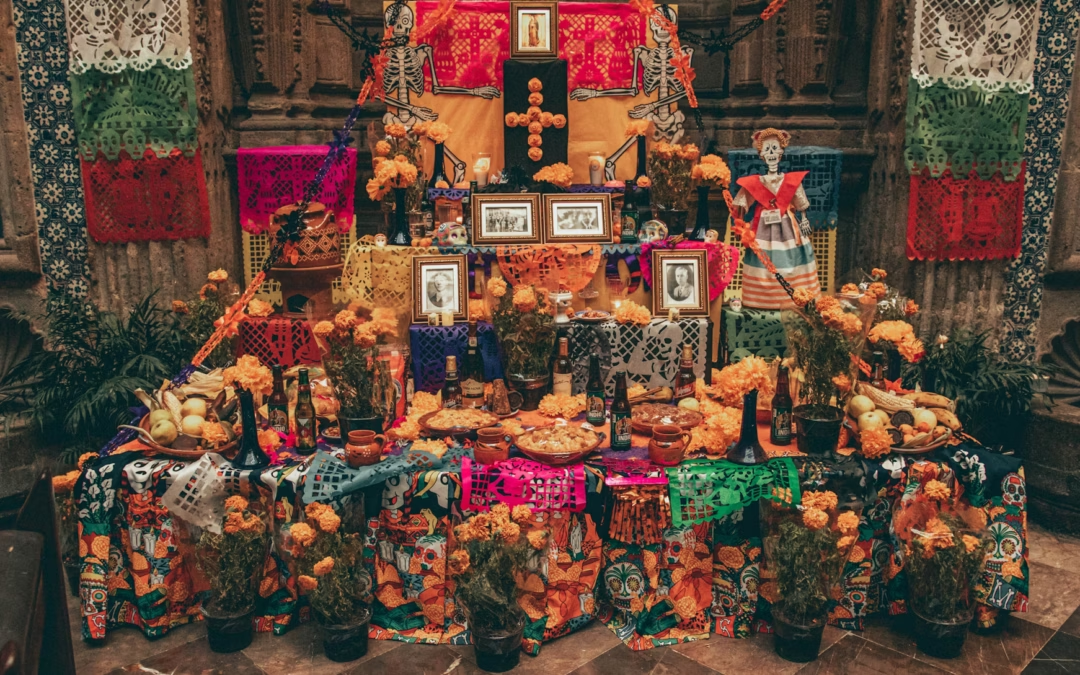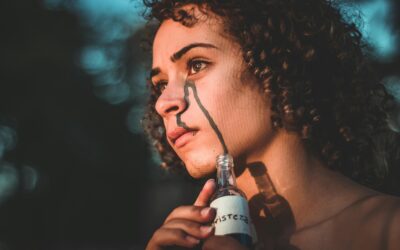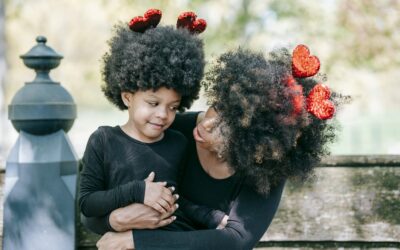Connection between Dia de los Muertos and Grief
Dia de los Muertos (Day of the Dead) and grief are deeply connected to one another. Dia de los Muertos is a cultural celebration of life and memory for deceased loved ones. Originated in Mexico and now being celebrated in other parts of Latin America and the United States, Dia de los Muertos helps transform sorrow into remembrance through rituals to welcome their spirits back. Individuals create ofrendas, aka altars, share stories, and gather in community for this celebration. Dia de los Muertos normalizes grief and loss and offers a healthier way to express and heal from loss. Please keep in mind that this is NOT “Mexican Halloween”. 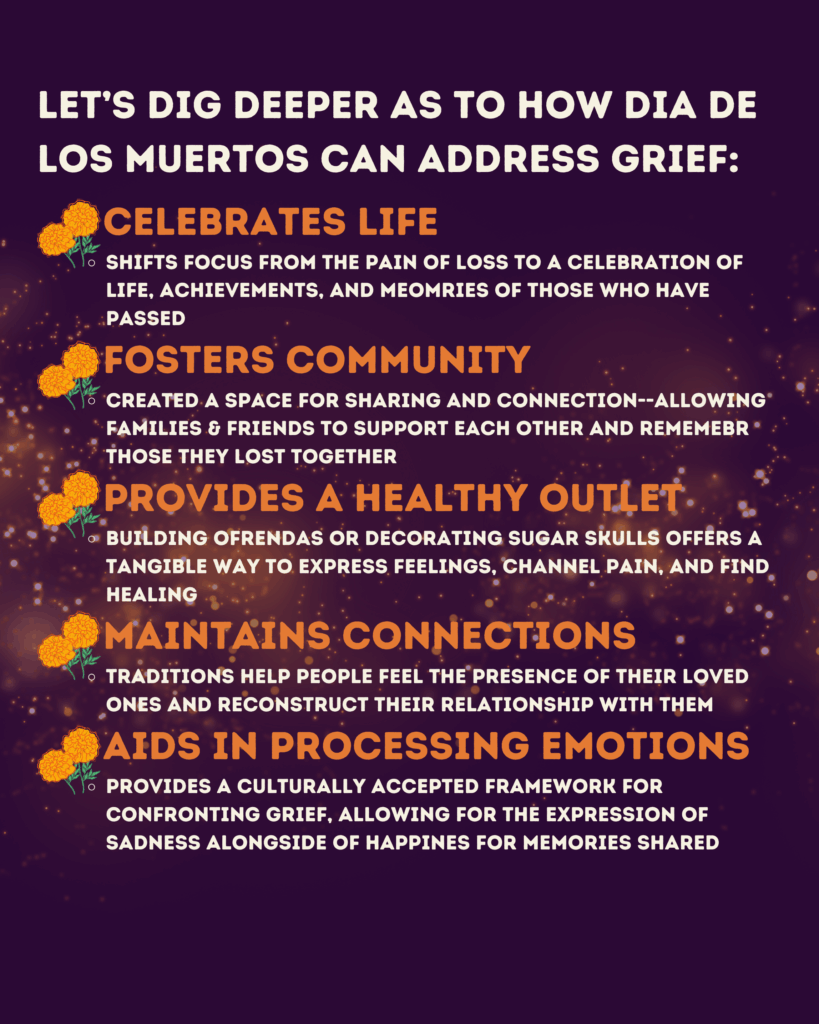
As mentioned above, the celebration creates a safe space that normalizes and accepts feelings of sadness and happiness mixed together. We are allowed to feel sad during our grief, but that does not take away from the feelings of happiness that one may experience at the same time when we remember positive memories with our deceased loved ones. In other words, it can transform pain into healing by allowing people to channel their pain into a constructive and healing process, by reframing death as a natural part of life and providing a way to build a new relationship with the deceased.
Celebrating, honoring, and remembering our deceased by creating ofrendas (altars/offerings) with personal items, pictures, favorite foods, and drinks creates a tangible connection to the deceased rather than just acknowledging their absence. Such rituals and expressions of emotion during Dia de los Muertos can create a cathartic release of repressed feelings associated with the loss. Believing that the deceased spirit is present can provide an opportunity for individuals to say things that were left unsaid when their loved one passed.
Additionally, it can feel like a therapeutic process because the celebration provides a platform for individuals to share memories by storytelling. Open dialogues about memories and experiences can also help others not feel alone in the process. It fosters a support network for those experiencing similar loss.
How is Dia de Los Muertos Celebrated?
Dia de los Muertos is a tradition that originated from indigenous traditions in Mexico within the Aztec culture. The Aztecs viewed death as a continuation of life. These traditions were later merged with Catholic holidays and traditions. Dia de los Muertos is a celebration of life and memory where it is believed that living individuals are able to welcome their loved ones back to the world for a short reunion by creating altars dedicated to them, sharing their stories, things they enjoyed doing and eating. It is meant to be a joyful and festive time that is celebrated in a span of two days every year on November 1 and 2. November 1st is typically dedicated to spirits of deceased children (All Saints’ Day), and November 2 honors spirits of adults (All Souls’ Day). In more recent times, people have also dedicated altars to other losses, such as pet losses, violent losses, forgotten people, missing people, etc.
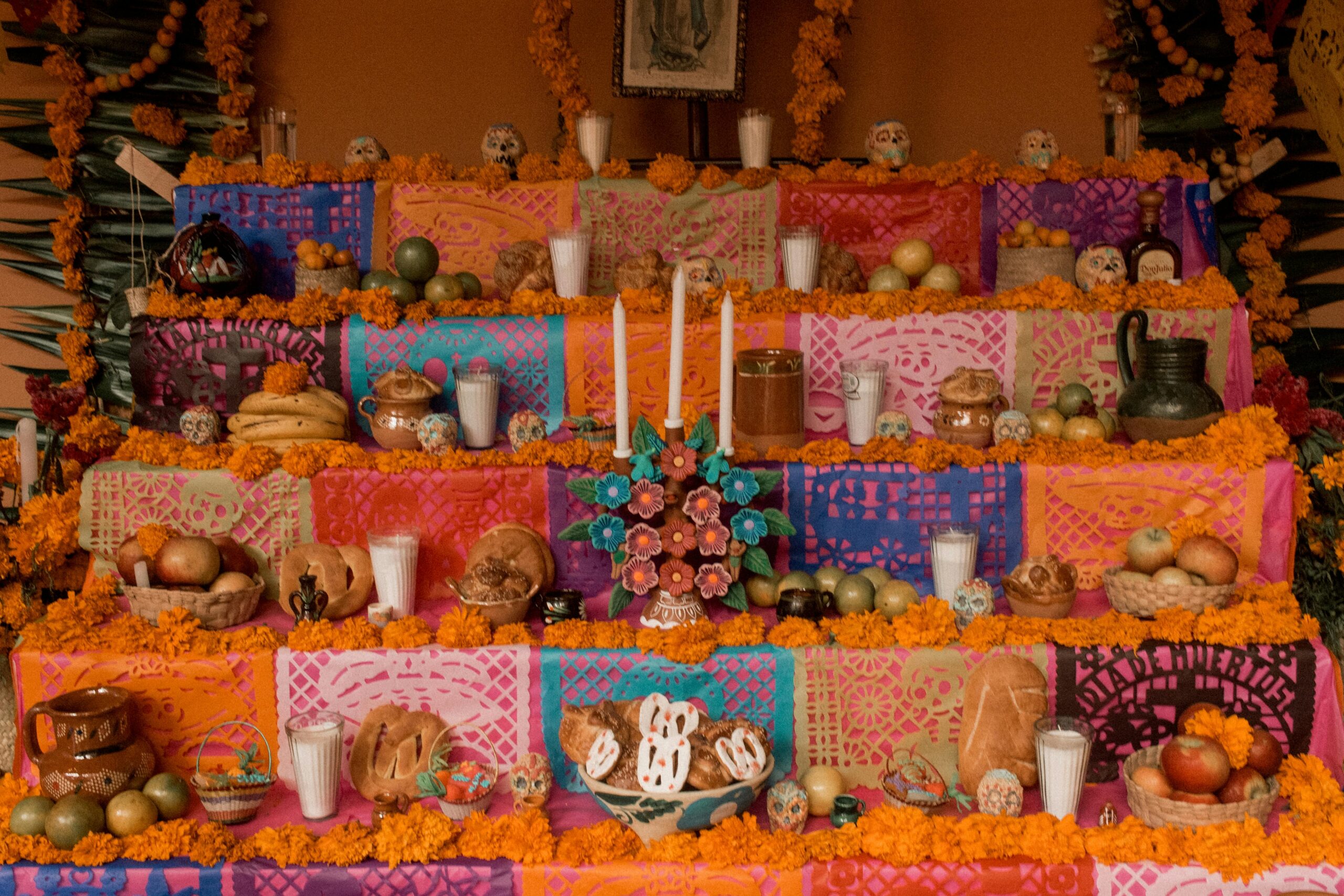
Ofrendas and Their Elements & Symbolism
Ofrendas, aka altars, are usually created at home—they symbolize a bridge between the afterlife and the world. Families set up their altars to honor their deceased loved ones by decorating them with symbolic pieces as well as photos of the deceased, flowers, candles, food and drinks they enjoyed, and mementos of the deceased (i.e., cans of favorite drinks, candies, food, music, etc.). Below is a brief explanation of what additional symbols are included in an ofrenda.
 Photos- Pictures of the deceased are the heart of the altar. This helps the spirits recognize their home.
Photos- Pictures of the deceased are the heart of the altar. This helps the spirits recognize their home.
Cempasúchil (Marigolds)- Also known as “flower of the dead,” are believed to guide the spirits from the afterlife to the ofrendas due to their bright color and strong scent.
Calaveras de Azúcar (Sugar Skulls)- Decorated skulls made out of sugar and often inscribed with the name of the deceased represent the departed and are a joyful symbol of death and reminder that death is a natural part of life.
Pan de Muerto- It is sweet bread that is often decorated with bone-like shapes on top that once again symbolize the cycle of life and death and the connection between the living and the dead.
Papel Picado – Colorful and intricately cut paper banners represent the fragility of life and the element of the wind.
La Catrina – An elegant, satirical female skeleton figure that represents death as an equalizer—that death affects everyone regardless of social status.
Candles & Incense – Also serve as additional guidance for the spirits from the afterlife to the ofrendas. Candles light the way and are also added for any forgotten souls, and incense burns to help guide the spirits with its aroma.
Water and Salt – Water is placed in the ofrenda for spirits to quench their thirst after their long journey, and salt represents purification.
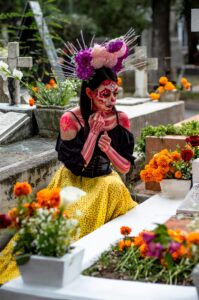 Overall, grief is a rollercoaster of emotions and experiences. Some can experience all stages of grief, while others may navigate with a few. Dia de los Muertos is only one of many alternative ways to cope with grief. I invite you to learn more about this beautiful tradition and see what you may be able to incorporate into your own grief values and beliefs.
Overall, grief is a rollercoaster of emotions and experiences. Some can experience all stages of grief, while others may navigate with a few. Dia de los Muertos is only one of many alternative ways to cope with grief. I invite you to learn more about this beautiful tradition and see what you may be able to incorporate into your own grief values and beliefs.
Taking the first step can be daunting, but we’re here to support you. Visit our website KCW Psychological Services to learn more about how we can help you navigate grief and loss.
Ready to begin your mental health journey? Please use the link below to book a consultation with your preferred KCW PSYCH therapist for support with managing your mental health.
CLICK HERE to book your consultation with Calendly.
Let us provide the safe, supportive space you need to heal and thrive.
Related Articles
Related
Unwrapping Wellness: Managing Holidays and Mental Health
The holidays are here, and so are a variety of emotions that we may experience as we navigate the holiday season. Some people are ready to jump into the holiday spirit, while others are not and only want the year to end as soon as possible. Holidays can cause feelings...
Destigmatizing Mental Health-Raising Awareness One Conversation at a Time
October is Mental Health Awareness Month, so what better way to advocate for mental health than to discuss what mental health is and the stigmas that surround it. Mental health talk has been popularized thanks to social media and TV shows; however, they do not always...
Embracing Your Inner Child: A Healing Journey to a Stronger You
Did you know that sometimes, part of our healing journey relates to connecting to our inner child and engaging in activities that our younger self might not have experienced growing up? At times, it may feel child-like and silly to engage in activities that seem to be...


